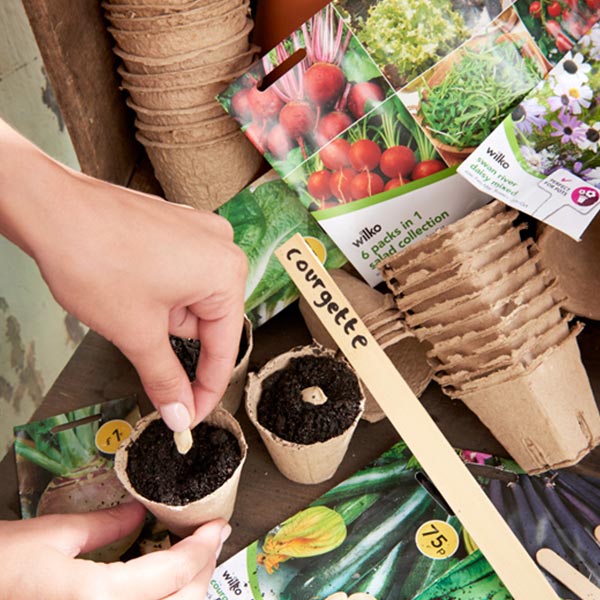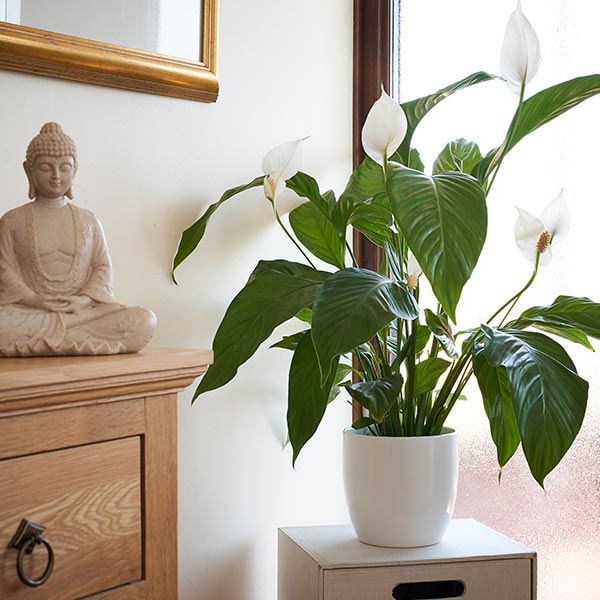Start how you mean to go on this January by setting a garden-related New Year’s resolution. It could be to totally transform your garden, have a go at growing your own veg, or to just simply sit outside each day to really enjoy and make the most of your outdoor space. January may be a quiet month in the garden, but it’s important to keep plants protected from unpredictable weather. Here's a rundown of all the other important jobs to be cracking on with this month.
 By Rochelle
By Rochelle- 28th Dec 2020
- 8min read
Give nature a helping hand
Although there doesn’t seem to be much happening in the garden at this time of year, the need for food will often drive birds and other wildlife into the garden. Birds will really appreciate anything that you put out for them. Fat balls are particularly good energy providers for them during the winter months. It’s also important to make sure that bird baths are kept clean and that the water isn’t frozen over.
For loads more tips & tricks, you can read our blog on how to help wildlife in winter!
Get chitting those potatoes
Before planting out your seed potatoes, it’s important to expose them to sunlight so they’re encouraged to sprout roots. It’s best done around the end of January, but there’s no harm in getting prepared earlier in the month so you can make sure everything’s to hand.
The process is fairly simple; each seed potato has a more rounded, blunt end that has a number of ‘eyes’. Stand the seed potato up in an old tray or egg box with the blunt end pointing up. Place on a windowsill where there’s plenty of natural light, or pop them in the greenhouse.
The potatoes should be ready to plant outside about 6 weeks later, when the shoots are around 2cm long.
Get planning and planting
They say that gardeners are true optimists because they’re always planning ahead, and this is especially true at this time of year. From the comfort and warmth of your armchair, January is the perfect time to start planning by ordering seeds and bulbs in preparation for the coming year’s vegetable plot.
If you grow a lot of veg in one area in your garden, remember to stick to a basic crop rotation to get the most out of your soil and avoid unnecessary pests and diseases. The basic rule of thumb is to group your veg into categories of brassicas (cabbage, cauliflower, kale), legumes (peas, broad beans), onions (onions, garlic, shallots), potato family (potatoes, tomatoes, peppers) and roots (carrot, beetroot, parsley) – keep these separate from each and rotate every year.
January is a great time to start sowing broad beans, lettuces, cabbages, cauliflowers, spinach and onions under cover. You can also grow salad leaves and herbs indoors.
If it isn’t too cold, fruit trees and bushes can be planted towards the end of the month too.

Tidy up your tools
Giving your tools a yearly clean will keep them working efficiently and help prevent disease spread. Wash them in warm, soapy water to remove any dirt.
If any of your tools are a little stiff, such as secateur blades or shears, apply a little WD40 to loosen things up a little. It’s also a good idea to sharpen the blades at the same time.
January is also a good time to check the lawnmower; you don’t want to get to March and find out your lawnmower has broken! Give it a good clean, check it’s still working, and sharpen the blade if needed.
House plants
Winter can be a stressful time for house plants, so check them regularly to see if they need watering and keep an eye out for any pest problems. Make sure you don’t over-water plants – this is one of the most common reasons for house plants failing!
For indoor plants, only feed plants that flower. It’s best to double check what house plant you have, as they may require different feeds. If your indoor plant doesn’t flower, chances are it won’t need feeding at all and just some water should be enough.

Trees, shrubs, roses & climbers
Continue to plant hardy trees & shrubs, climbers, roses and hedges on fine days, as long as the soil isn’t frozen solid or waterlogged.
At this time of year you may be able to get your hands on bare-root plants. These are cheaper than containerised plants, so a better bet when you have a lot of planting to do – such as a new rose bed or hedge.
Browse our full garden range at wilko.com.
What are your must-do jobs in January? Let us know on Facebook, Instagram, TikTok & X.